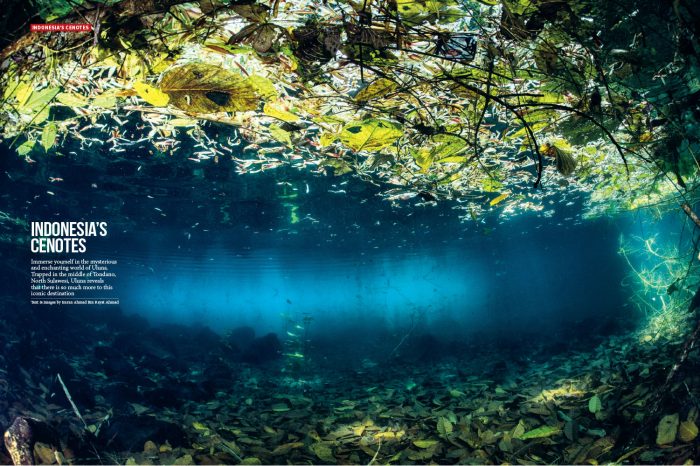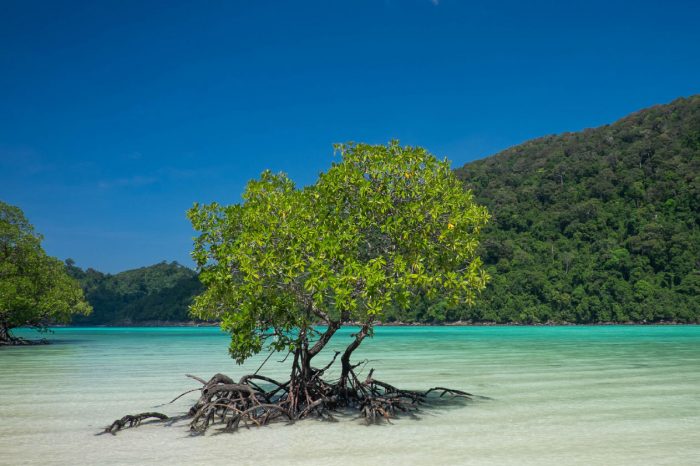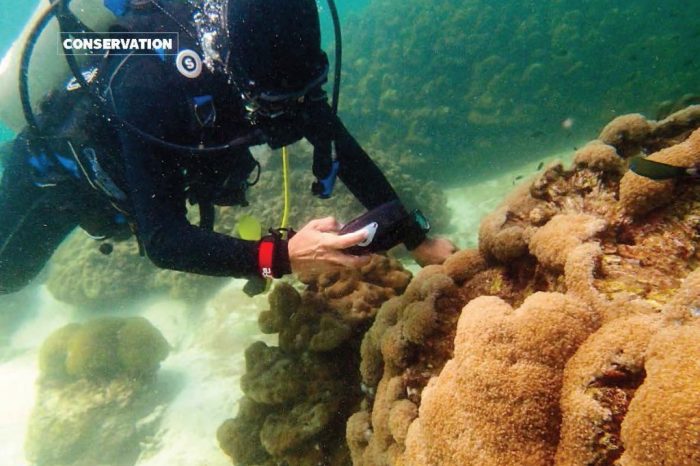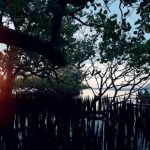The Peace of Restoration
Villagers in North Sulawesi have changed their fates by planting a forest of mangroves, demonstrating that we do indeed have the capacity to turn things around on this planet before it’s too late. Read on as Liz Cunningham reveals all. (text and images by Liz Cunningham)
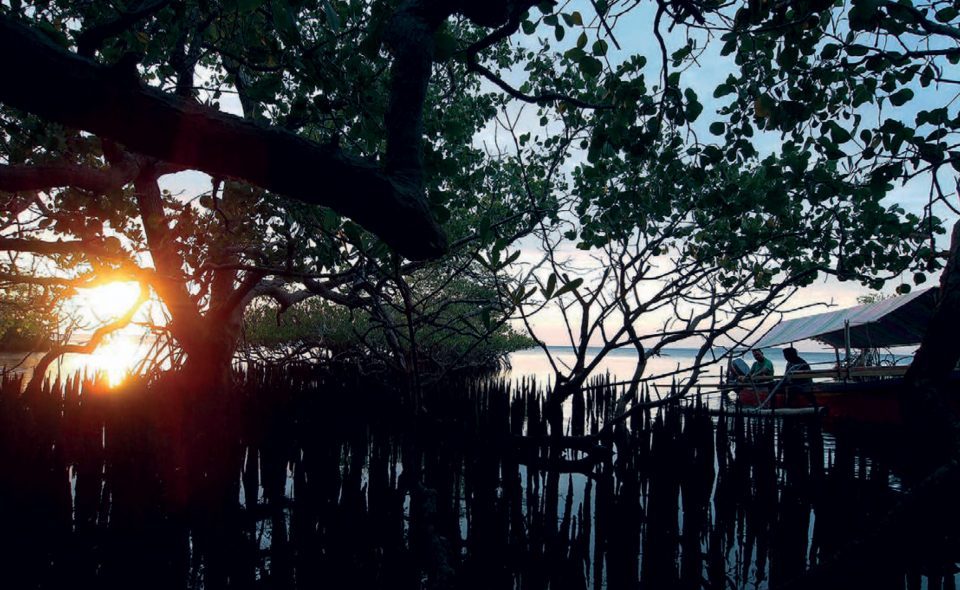
IMAGINE FOR A MOMENT a garbage-strewn harbour bereft of fish, toxic chemicals leaching from the debris into the water. How many times have you seen this in a news article? Last August I visited Bahowo, a small village in North Sulawesi, where that wasn’t the case and it wasn’t a stroke of luck. It was a stroke of intention.
It was dusk and we paddled an Austronesian outrigger canoe through shallow water. Two of the villagers, Nyomen and Alexander, were taking me to see some mangroves.
“We knew mangroves are nurseries for juvenile fish and protect the coastline from storms,” Nyomen told me. “If we want more fish to return to this coastline, we need the mangroves.” The villagers were very happy when three years ago university students came and planted seedlings. Years before many of the mangroves had been cleared to build a lobster farm that failed, leaving the coastline damaged.
Once we got out of the harbour, Alexander started a small diesel engine. We motored along the coast with a soft chortle. To the left a large volcanic island jutted out of the sea.
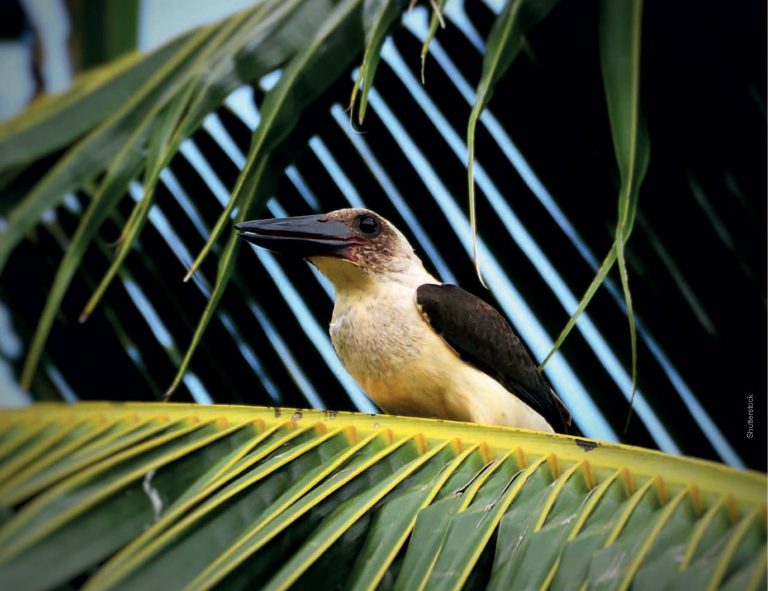
After a few minutes, Alexander pointed the canoe towards shore and stopped the engine. Silence. We glided into a small water forest. Birdsong from the lush jungle filled the air. There were hundreds of large mangroves, 5 and 10 metres tall. The stubby tree trunks grew from large, arc-shaped roots half-submerged in water. The labyrinthine patterns of the roots cast circular shadows on the water.
I slipped over the side of the boat into waist-deep water and several inches of sticky mud. The silky shade was a welcome relief at the end of a hot day. One of the soles on my shoes had cracked slightly. When I took my first steps in the mud, the suction was so strong that the sole of the shoe came off in the mud.
Oh, well. Too beautiful to worry about the shoe. The last bit of light flickered through the deep-green mangrove leaves. The short rattling call of a kingfisher sounded nearby.
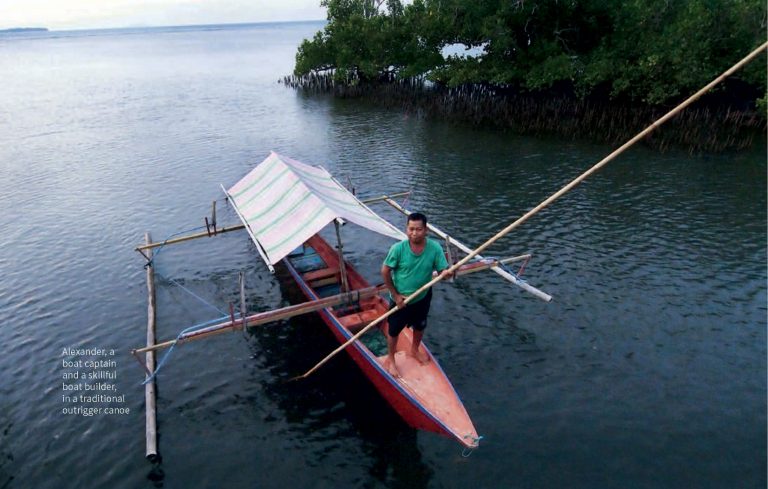
Alexander, a boat captain and a skillful boat builder, in a traditional outrigger canoe
Water forests like these – the meeting place of forest and sea – encapsulate so much of life’s essence. Start with water, add photosynthetic organisms, now you have oxygen and carbohydrates – the origins of all the life around us.
For the villagers replanting the mangroves was no ornamental exercise. One of the fisherman, Arnold, had explained to me that when he was a child there were plenty of fish in the harbour. Now they travelled for over seven hours by boat and sat on a platform for days in the open ocean, in the hopes of getting a good catch. Overfishing in Bahowo isn’t something you read about, yet it’s the equivalent of going to the grocery store and the shelves are empty.
For the rest of this article and other stories, check out our latest Asian Diver Issue 3/2017 Vol.147) here or download a digital copy here.

